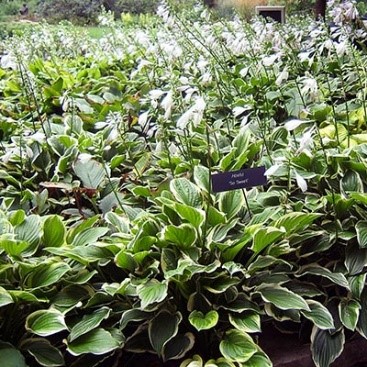Get a Jump Start on Next Spring
- 2022-09-04
- By mkirk
- Posted in Horticulture, The Garden Buzz
By Judy Kunz, Colorado Master Gardener
Spring and summer blooming herbaceous perennials can be rejuvenated by dividing them in the fall. Most perennials will benefit from being divided every three to five years if they are overgrown, have become bare in the center, have sparse leaf growth near the bottom or are not flowering to their potential. Plants that are over-crowded are easy targets for disease, and dividing them allows for more air circulation, resulting in healthier, more vigorous plants and bigger blooms. Don’t wait until a plant is declining or under stress to divide it.

Fall is an ideal time for division because when flowering is completed, plants are not expending their energy on producing blossoms. They can direct that energy toward root growth rather than flower and leaf growth. It is a good idea to divide and replant them four to six weeks before the average annual frost date. This allows them to begin establishing before winter sets in. While fall frosts vary from year to year, in Arapahoe County there is a 15% probability of frost on October 1 and a 90% probability of frost by October 15, making early to mid-September a good target date for division.
Water plants well several days before planned division. To avoid stressing plants, don’t relocate them on hot, sunny days. It is better to wait until cooler or overcast weather. To prevent new plants from drying out, prepare the new site in advance by digging the hole and working the soil. The new location should be approximately twice the diameter of the root ball. Spade in compost or well-aged manure and mix well. In the case of organic amendments such as compost or manure, more is not better. When excessive amounts of organic matter are added to the soil, nutrient uptake is compromised. The ideal amount of organic matter in the soil is approximately 5%.

Dig up the root ball gently, retaining as much of the root system as possible. Trim the foliage slightly, shake off or rinse off excess soil and remove any dead foliage. Place the plant in the prepared hole and gently press in, adding amended soil. The plant should sit slightly above the surrounding soil and will settle in when it is watered. In order to allow the plant to adjust to its new surroundings, save fertilization for next spring.
To protect new plants as winter sets in and the ground freezes, cover them with leaf mulch, pine boughs or weed-free straw. To give plants a good start, it is crucial to give them adequate water during prolonged snowless periods when the ground is not frozen. Never allow them to dry out.
Enjoy Part 1 of dividing perennials in the spring in the March 2022 Garden Buzz issue. For further information on how to divide different types of perennials, click on this link.
Horticulture Resources
- Garden Buzz Archives
- CSU Extension Resources
- Colorado Master Gardener Program
- Foothills to Plains Native Plant Master Program
- Native Bee Watch Community Science Program
- The Co-Hort Blog
- PlantTalk Colorado
- Soil Testing
- Plant Select
- Emerald Ash Borer
- Japanese Beetle
- Colorado State Forest Service
- Ask an Expert


